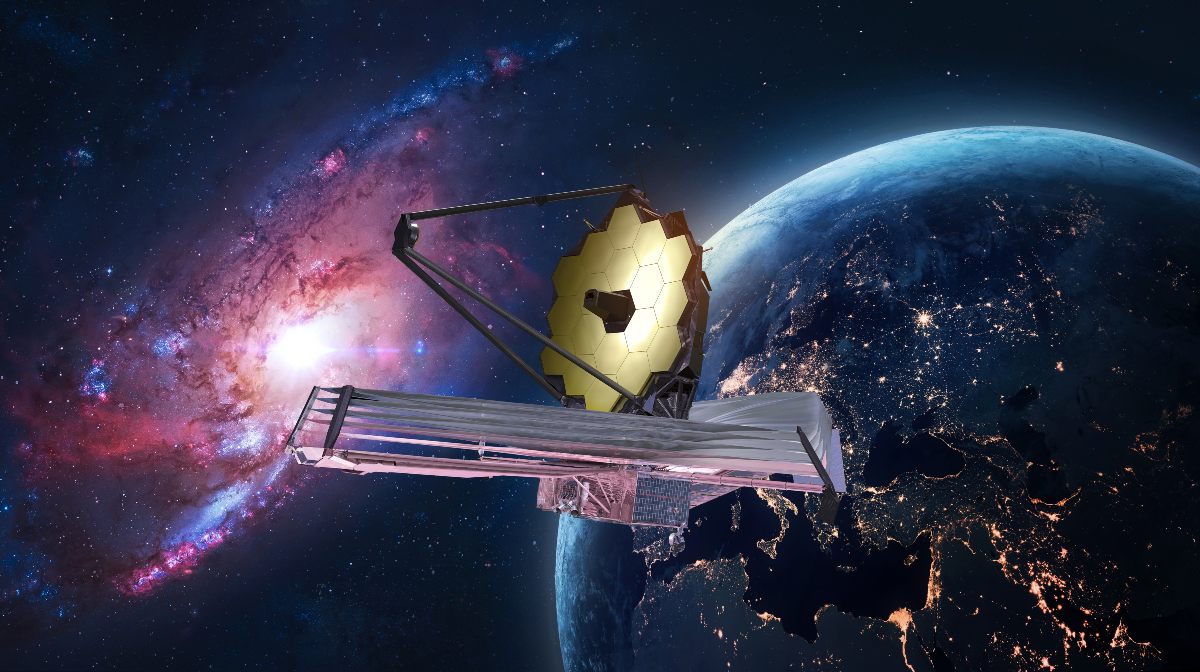The James Webb Telescope has made an important discovery that could determine whether there is life on other planets. The powerful artifact has found what could be signs of life on an exoplanet, located 120 light-years away.
The discovery in question is evidence of a substance called dimethyl sulfide. The relevance of this discovery is due to the fact that on Earth this substance is produced only by phytoplankton, organisms that are microscopic and present in seas and fresh waters. However, it is not yet known whether on this exoplanet this substance is produced by some as yet unknown natural chemical process or whether it is a biosignature, i.e., a substance that is considered evidence of the existence of life.
In addition to this substance, the telescope also discovered carbon-containing molecules, indicating that the exoplanet has a hydrogen-rich atmosphere.
What is the significance of this discovery by the James Webb telescope?
The fact that the James Webb Space Telescope has detected these substances could be an indicator of the viability of life on the exoplanet or even an indication of biological activity. Dimethyl sulfide is a chemical compound that is only produced on Earth by one living being. According to astronomer Nikku Madhusudhan, author of the research, on Earth dimethyl sulfide molecules are unique to life and there is no geological or natural process that produces this substance. That is why it is considered that on a planet with conditions similar to Earth, the existence of this substance could be evidence of the existence of life.
This exoplanet is 8.36 times the size of Earth and has indications that it may have water. It is located in the constellation Leo and is designated K218b. This type of exoplanets are known as hiceans, thus combining the words hydrogen and ocean. They are known by this term because the planet has an ocean while having a hydrogen-rich atmosphere.
According to Madhusudhan, previously the search for life was conducted on rocky planets that were smaller than Earth. However, experience is showing that hicéan exoplanets may offer better results for atmospheric observation.
The discovery of hydrocabides and methanes on this exoplanet, together with the absence of ammonia or carbon monoxide molecules, is a promising combination for the formation of a feasible atmosphere for life.
What to expect after this discovery about the Hycean exoplanets?
Although this is an important discovery (and one that could mean a revolution), we must be cautious.
The fact that dimethyl sulfide is found along with the substances that make up the atmosphere are not indicators that there is life on the exoplanet. According to the scientists participating in the mission, the evidence supporting the presence of dimethyl needs to be more robust as this presence is tenuous. For this, it is important that the James Webb Space Telescope makes more observations in order to confirm the presence of the substance.
The other noteworthy aspect of this exoplanet is that it is in an optimal orbit for water to exist on its surface. This adds to the positive indicators that there could be an ocean there. However, in spite of the combination of these two aspects, it does not mean that it is a planet that harbors or could harbor life. The water temperature is not yet known, which is essential to determine whether a planet is habitable or not.




